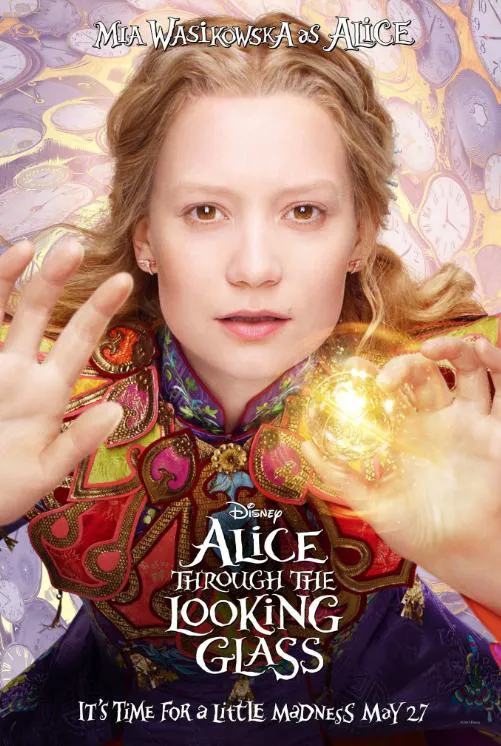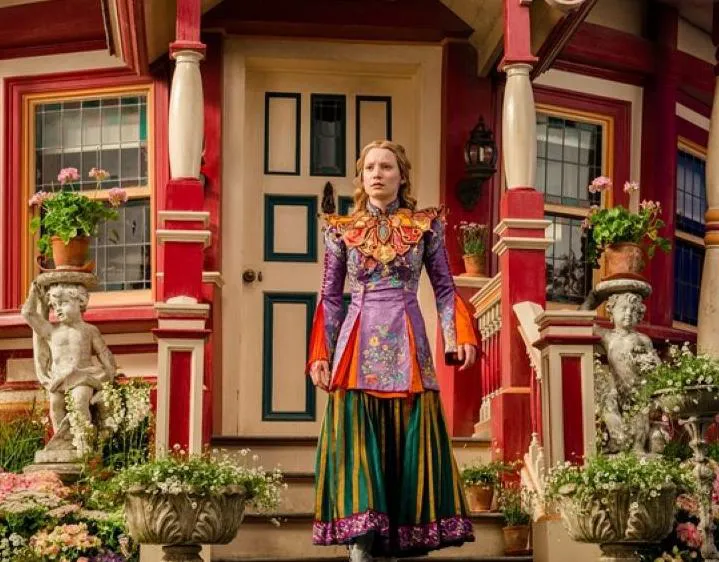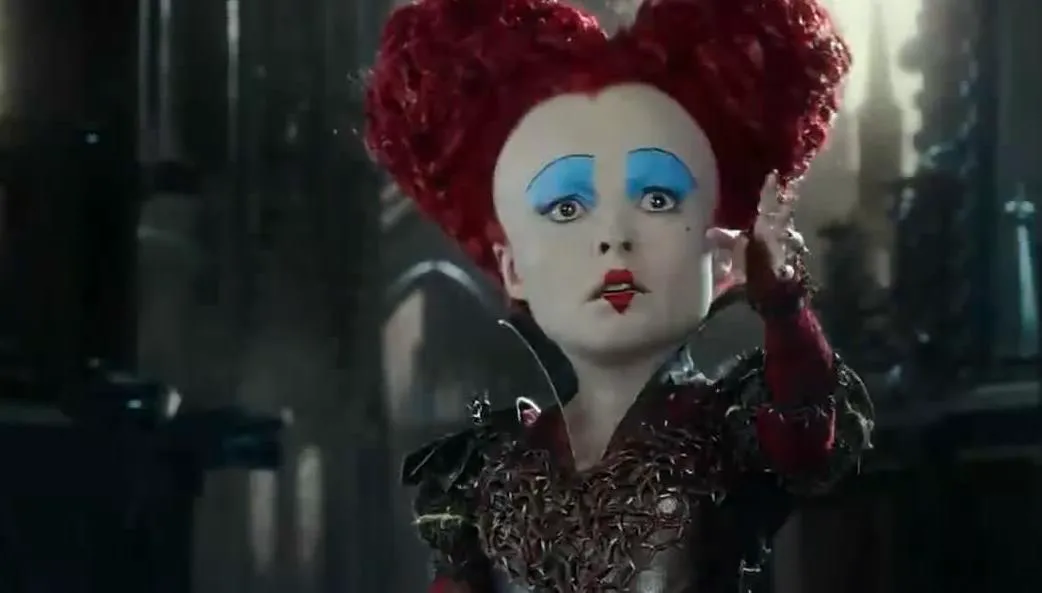the themes of growth and self-discovery in “Alice Through the Looking Glass.”
Introduction
“Alice Through the Looking Glass” is a fantastical adventure that continues Alice’s journey between dreams and reality. This sequel not only immerses us in a magical world but also showcases Alice’s growth and self-discovery.
With its stunning visuals, captivating plot, and stellar performances, the film is both a visual spectacle and a thoughtful exploration of friendship, family, and self-awareness. Whether you’re a devoted fan of “Alice in Wonderland” or simply enjoy fantasy adventures, “Through the Looking Glass” offers both entertainment and inspiration.
Setting the Stage
The story begins with Alice’s return to London, where she saves her father’s ship and faces a series of challenges. Overwhelmed and troubled, Alice unexpectedly finds herself back in Wonderland, her familiar dreamscape.
This time, she enters through a magical mirror into a new and wondrous world. In this “Looking Glass” dream, Alice encounters the White Queen, Mirana, and other Wonderland inhabitants.
However, Wonderland is no longer the serene and beautiful place she remembers. Alice discovers that her friend, the Mad Hatter, is consumed by despair over the loss of his family. To save him, Alice embarks on a time-traveling adventure, seeking out the enigmatic “Time” to correct past mistakes and rescue the Hatter’s loved ones.

This quest is fraught with challenges. Alice must enter Time’s castle to find a way back to the past. But Time is unwilling to relinquish his power to anyone. To gain his aid, Alice must find the Chronosphere, a source of immense power.
In her search for the Chronosphere, Alice travels back in time and meets the young Mad Hatter and his family. By revisiting and re-examining the past, Alice begins to understand the Hatter’s pain and discovers a shocking truth about the complex connections between past and present.
As she chases Time and seeks the Chronosphere, Alice faces numerous obstacles and dangers. She must contend with the Red Queen, Iracebeth, and overcome Time’s attempts to thwart her journey. Yet, Alice perseveres, displaying courage, wisdom, and determination, convinced that she can change fate.
Alice succeeds in finding the Chronosphere and reunites with the Mad Hatter, bringing it back to Wonderland to restore the flow of time. However, this victory comes at a cost, and Alice must confront her choices and sacrifices.
Alice’s Journey of Growth
Alice’s journey of growth is a central theme in “Alice Through the Looking Glass.” From the outset, we witness Alice’s transformation from a naive girl into a brave and resolute young woman.
In the first film, Alice is a confused young girl unsure of her identity. In this sequel, she undergoes numerous adventures and challenges, facing her fears and demonstrating her inner strength.
The connection between dreams and reality is also crucial to Alice’s growth. When she re-enters Wonderland, she encounters fantastical creatures and surreal scenes, but also faces situations that mirror her inner world. This interplay between dream and reality allows Alice to delve deeper into her identity and discover her true inner power.
External conflicts and internal struggles form the core of Alice’s journey. She confronts numerous challenges, overcoming her fears and insecurities. These difficulties stem from external pressures and expectations, as well as her own self-doubt. However, through her unwavering will and inner resolve, Alice triumphs, proving her worth and courage.
Throughout her journey, Alice gradually sheds her dependence on the opinions of others and begins to truly know and accept herself. She learns to trust her instincts and bravely pursue her dreams. This inner transformation enables her to face external challenges and unlock her potential.
“Alice Through the Looking Glass” uses Alice’s journey to illustrate a universal theme: that by facing external conflicts and internal struggles with courage and perseverance, we can overcome obstacles and find our true selves. The story encourages us to believe in ourselves, bravely confront challenges, and continuously discover and develop our potential.
Self-Discovery in the Looking Glass
Self-discovery is a central theme in “Alice Through the Looking Glass.” Through the symbolism of the mirror, time and memory, and the influence of others, Alice gradually achieves self-awareness and growth.
The mirror plays a significant symbolic role in the film, often representing introspection and self-reflection. Entering the dream world through the mirror becomes Alice’s way of confronting her inner conflicts. The Wonderland within the mirror is not only a fantastical dreamscape but also a place for Alice to re-evaluate her identity and values.
Through the mirror, Alice confronts and accepts her imperfections. She begins to consider who she is and who she wants to become. This self-reflection enables her to grow and find her true self.
Time and memory also play crucial roles. Alice must travel back in time to change the Mad Hatter’s fate. This process is not only about reshaping the past but also about redefining her future.
By returning to the past, Alice witnesses the Hatter’s family history, deeply understanding his pain. Through revisiting and re-examining the past, she finds the key to solving the problem. This re-evaluation makes Alice realize that the past does not entirely define a person’s future, and that everyone has the power to change their destiny.
Through her interactions with time, Alice learns to cherish the present and set clearer goals for the future. She draws wisdom from past experiences, bravely facing unknown challenges and paving a new path for herself.
Finally, the influence of others profoundly impacts Alice’s self-discovery. She encounters many Wonderland residents, including the White Queen, Time, and other characters. Through these interactions, Alice learns understanding and tolerance.
She begins to recognize that everyone has their own story and background, and that those who seem strange or different may share common sorrows and desires. This understanding helps Alice build deep emotional connections with others, making her more open and receptive to different perspectives and experiences.
Through her interactions with others, Alice broadens her horizons and expands her understanding, realizing that the influence of others is invaluable in the journey of growth, providing new perspectives and inspirations to help her better understand herself.
In this film, relationships play a crucial role in Alice’s self-identity. The strength of family and friendship provides her with support and understanding, while the presence of antagonists offers contrast and insight. Alice’s position in society also leads her to constantly explore self-identity and responsibility.
Family and friendship play significant roles in Alice’s growth. Her family is her strongest support, offering unconditional encouragement. The Kingsleigh family, especially her mother, Elinor, plays a key role in her adventures, believing in Alice’s abilities, encouraging her to follow her inner voice, and offering help in times of difficulty.
Friendship is also an indispensable part of Alice’s growth. She forms deep emotional bonds with the White Rabbit, the Mad Hatter, the Dormouse, and other Wonderland residents. These friendships provide her with emotional support and understanding, making her feel less alone. Friends support each other, facing difficulties and challenges together, allowing Alice to feel the importance of finding herself in others.
Antagonists also play an important role in the film, offering insights through contrast and opposition. The Red Queen, Iracebeth, is a prominent example, representing power and deception, the forces Alice must confront. Iracebeth and Alice form a stark contrast, making Alice more determined to stand on the side of justice.
Through her struggles with antagonists, Alice learns to stand by her beliefs, not swayed by hypocrisy and deceit. This contrast inspires her inner courage and perseverance, making her more clear about her values and goals.

Alice’s position in society also leads her to constantly explore self-identity and responsibility. As a young woman, she faces expectations and pressures from society, especially in a male-dominated world, where she must strive to prove her worth and abilities.
Alice gradually finds her voice in this process, daring to pursue her dreams and working hard to achieve them. She transcends traditional role definitions, demonstrating the strength and courage of women.
She also feels the importance of personal responsibility, caring not only about her own fate but also about the future of Wonderland, taking on the responsibility of protecting Wonderland and resolving conflicts, reflecting a sense of social responsibility and mission.

“Alice Through the Looking Glass” explores the themes of self-discovery and growth through character relationships, self-identity, the power of family and friendship, as well as antagonists and social positioning. Here is a summary of the film’s themes and the insights viewers can gain through reflection and application.
The film’s themes can be summarized as self-discovery and growth. Through her adventures in the mirror, Alice constantly reflects on her identity, values, and dreams, and forms deep emotional connections with family, friends, and the residents of Wonderland. By facing challenges, accepting her imperfections, and standing by her beliefs, she gradually achieves self-awareness and growth.
Viewers can also engage in self-reflection and application after watching the film. Through the stories and characters in the film, viewers can inspire their own journey of self-discovery, reflecting on their inner conflicts, examining their values and goals, and bravely facing their past and future.

They can also experience the power of family and friendship, realizing the importance of close connections with others for personal growth, accepting their own and others’ imperfections, understanding the power of tolerance, and recognizing that everyone has their own story and background. Viewers can also experience the contrast and insights brought by the presence of antagonists.
Understanding the importance of upholding inner justice and values, viewers can also reflect on their roles and responsibilities in society through Alice’s positioning in society, and make positive contributions to personal growth and social relationships.
Final Thoughts
The performances of the actors are also commendable. Johnny Depp once again plays the Mad Hatter, delivering another brilliant performance, vividly portraying the character’s ecstasy and inner pain. Mia Wasikowska and Helena Bonham Carter, among other leads, also deliver outstanding performances, endowing the film with vivid characters and emotional depth.
“Alice Through the Looking Glass” presents a story of self-discovery and growth through elements such as character relationships, self-identity, and social positioning. Viewers can engage in self-reflection and application through the insights in the film, in order to achieve personal growth and establish good social relationships.